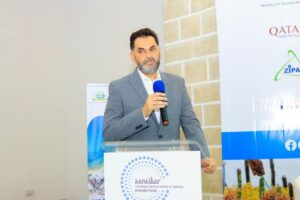TANZANIA: TANZANIA is increasingly emerging as a top choice for investors worldwide, reflecting the sixth phase government’s achievements in enhancing the business environment. The country stands out as a beacon for investors seeking stability and growth in East Africa, leveraging its strategic geographical position and political stability to promise returns on investment.
The surge in investment is evident in the recently concluded first quarter (Q1) of the 2024/2025 financial year (FY), where Tanzania registered 256 new projects, a significant increase from 137 projects in the same period last FY.
Mr. Gilead Teri, Executive Director of the Tanzania Investment Centre (TIC), briefed journalists in Dar es Salaam, stating that the value of investments in Q1 reached 3.9 billion US dollars (about 11 tri/-), compared to 2.1 billion US dollars (about 5.7 tri/-) during the corresponding period of the 2023/2024 FY.
Mr. Teri highlighted the government’s unwavering commitment under President Dr Samia Suluhu Hassan to welcome both domestic and foreign investors, underscored by a proactive economic diplomacy approach.
“President Dr Samia has prioritized the investment sector as a key driver for economic growth and poverty alleviation,” he said.
The new Investment Act of 2022 has also played a pivotal role by providing various incentives, allowing investors to enjoy import duty exemptions for capital goods such as machinery, while the deemed capital goods benefit from a 75 per cent import duty relief.
Furthermore, the Act lowered the capital threshold for domestic investors to 50,000 US dollars (about 133m/-) from 100,000 US dollars (about 267 m/-).
In addition to favourable legislation, Mr. Teri noted that collaborative efforts involving Tanzania’s embassies, TIC and other public entities have effectively promoted the country’s economic opportunities and tailored incentives for investors.
ALSO READ: Tanzania seeks foreign investors for energy transition projects
The TIC reported a substantial increase in investment during the last FY’s fourth quarter (Q4, April to June), where 198 projects worth 1.6 billion US dollars (about 4.3 tri/-) were registered, creating over 96,000 jobs.
This represented a 53 per cent increase from the previous year’s Q4, which had 129 projects valued at 1 billion US dollars (about 2.7 tri/-), generating 14,631 jobs.
In terms of sector performance in Q4, the manufacturing sector led with an estimated capital of 637 million US dollars (1.7 tri/-), followed by commercial building, human resources, transportation and tourism.
Foreign Direct Investments (FDIs) constituted a notable share of overall approved investments, valued at 938 million US dollars (about 2.6 tri/-), while domestic investments made up about 12 per cent, amounting to 681 million US dollars (about 1.9 tri/-).
Mr. Teri emphasised that the consistent upward trends in project registrations, capital inflows and job creation reflect growing business confidence in Tanzania, supported by TIC’s facilitation efforts.
In an interview with the Daily News, economist and investment banker, Dr Hildebrand Shayo praised Tanzania’s business-friendly environment and low-risk landscape, noting its exceptional economic potential due to a beneficial tax system and regulatory framework.
“Tanzania’s pivotal location within the East African Community (EAC) enhances its attractiveness to investors,” Dr Shayo remarked, citing the ongoing construction of critical infrastructure, including the electrified Standard Gauge Railway (SGR).
Business expert Dr Sylvester Jotta on his part attributed the country’s investment success to predictable business policies and laws, as well as reforms in ministerial structures, which have amplified the government’s commitment to boosting investments.
Economic diplomacy expert, Professor Kitojo Wetengere highlighted Tanzania’s strong diplomatic relations within the EAC and SADC, enhancing its position as a gateway to these markets.
He urged the government to continue improving transport infrastructure to accelerate regional trade and investments.
With abundant natural resources, including gas, minerals and fertile land, Tanzania presents a wealth of opportunities for investors.
Mr Akberalis Jozer, Director and Founder of Akberalis Hardware and Electric Limited, noted that good governance under President Dr Samia has reduced bureaucracy, fostering a supportive environment for business operations.
In her end-of-year speech on December 31, 2023, President Samia announced that the TIC registered a total of 504 projects worth 5.6 billion US dollars (about 14 tri/-) in 2023, a 58 per cent increase from 292 projects in 2022, with 55 of those being expansion projects, further testament to investor’s’ confidence in Tanzania’s business climate.
As Tanzania continues to enhance its investment landscape, it stands poised as a promising destination for global investors seeking growth and stability in East Africa.
Source: allafrica.com














